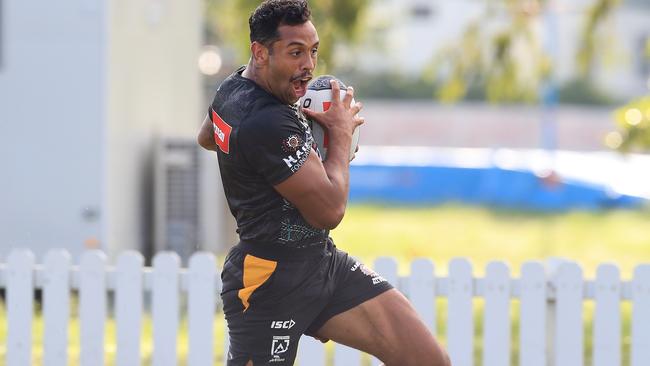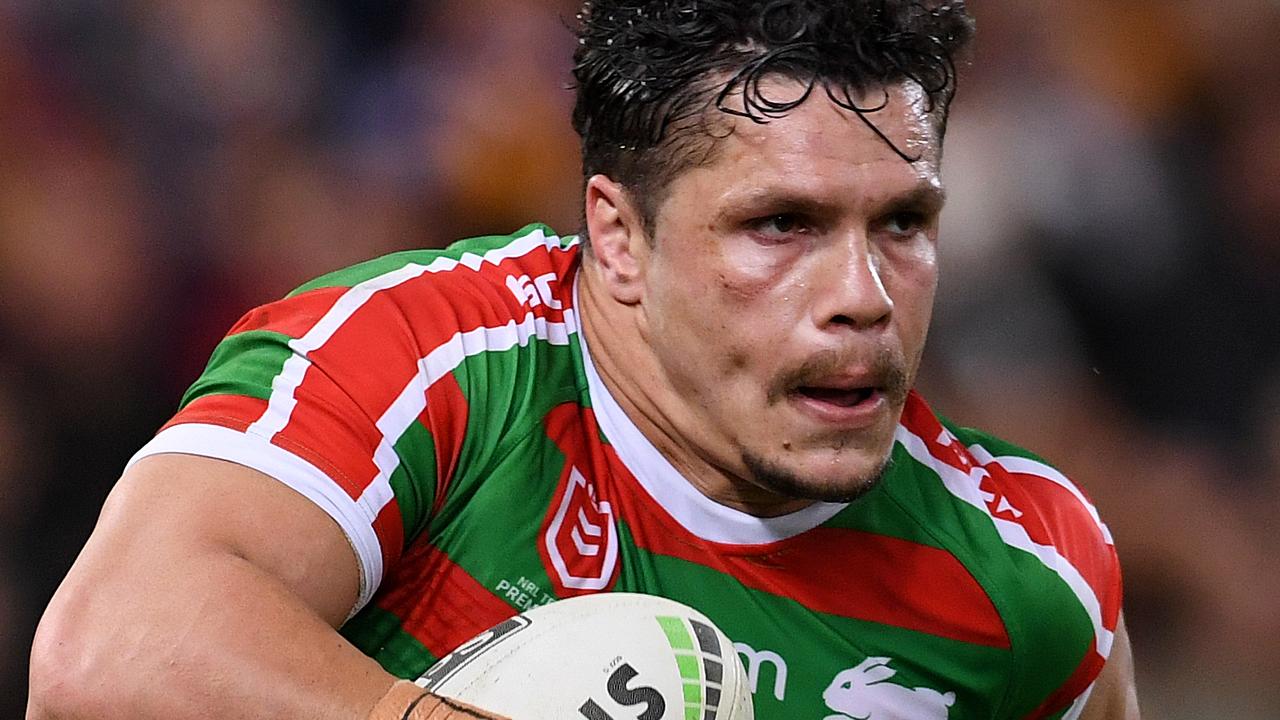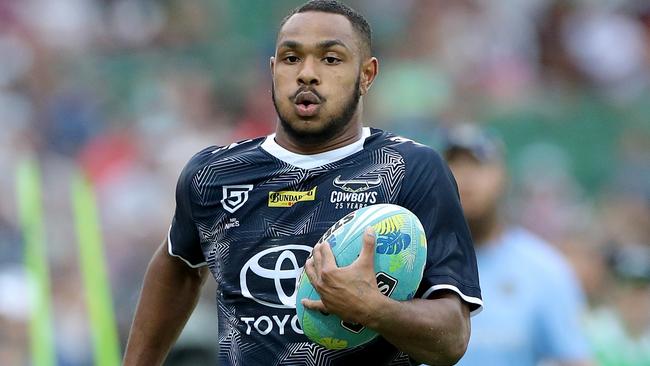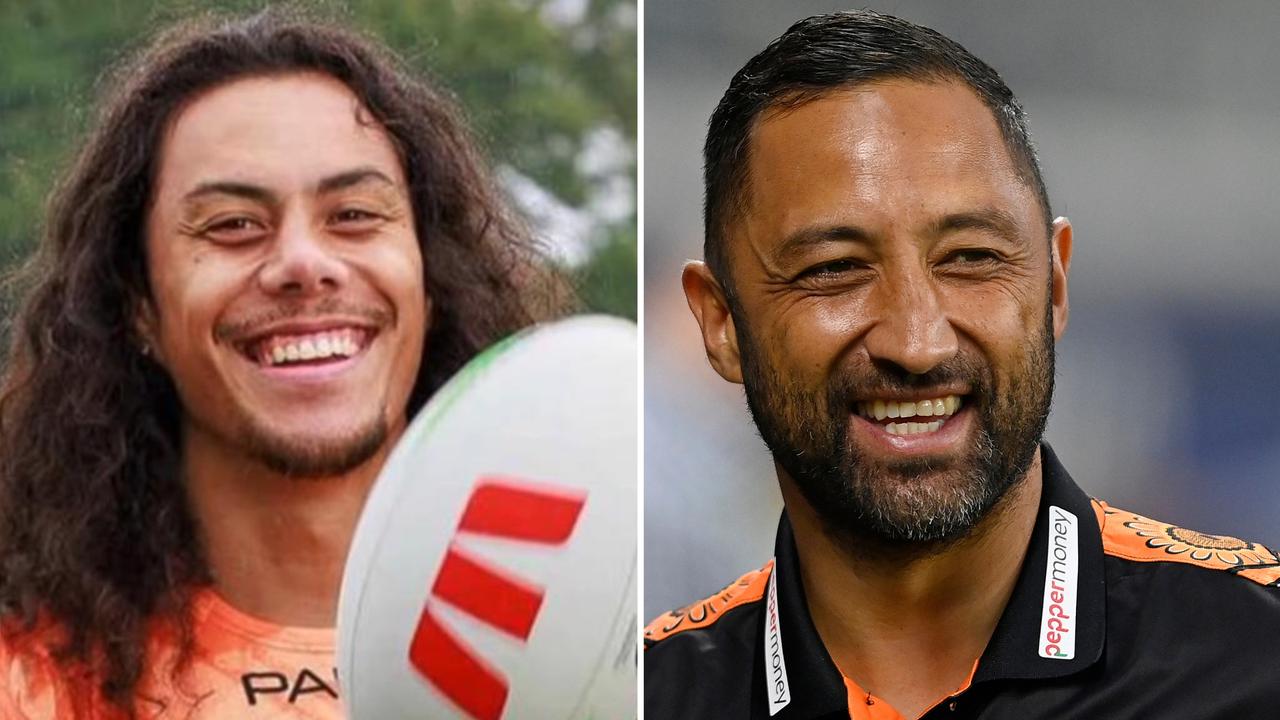From Josh Addo-Carr to Hamiso Tabuai-Fidow, who is the fastest man in rugby league?
Is it Josh Addo-Carr, James Roberts or North Queensland’s newfound rocket Hamiso Tabuai-Fidow? MIKE COLMAN tries to answer an impossible question.
Opinion
Don't miss out on the headlines from Opinion. Followed categories will be added to My News.
The eye-catching performances at the NRL Nines of Cowboys’ tyro Hamiso Tabuai-Fidow (hereby to be known as The Hammer because it takes longer to say his name that it takes him to run 50 metres) have ignited that age-old question: just who is the fastest man in rugby league?
It’s an oldie but a goodie and one that will probably never really be answered because there are so many variables involved that comparisons are virtually impossible.
But hey, that’s never stopped us before has it?
Besides, modern technology has made measuring players’ pace, if not a perfect science, then at least feasible.
Watch the 2020 NRL Telstra Premiership on KAYO. Every game of every round LIVE & Ad-Break Free during play. New to Kayo? Get your 14-day free trial & start streaming instantly >

According to figures provided by Telstra Tracker, the data collection system unveiled during the 2017 Origin series, the fastest player over the past three seasons is Josh Addo-Carr (hereby to be known as The Fox for the same reason that Tabuai-Fidow is called The Hammer).
Apparently in 2018 Addo-Carr was clocked moving at 38.5km/h which, by my calculations, is the equivalent of 9.35 seconds for 100m – or .23 secs faster than Usain Bolt’s current world record of 9.58 secs.
Or, in other words, completely ridiculous.
The thing is, the Telstra Tracker records only the players’ fastest speed, not how quickly they move over a prolonged distance. For example, Bolt’s fastest recorded speed is 44.72km/h which, if sustained would give him a time of 8.05 secs for 100m.
Even so, there is no question that Addo-Carr is quick. His fastest recorded speed last season of 37.1km/h was best in the league, ahead of James Roberts’ 36.2km/h. (Incidentally, if those speeds were maintained over 100m The Fox would have won the Olympic 100m gold medal at Rio with a time of 9.7 secs and Jimmy the Jet would have finished fifth in 9.94 secs).
But of course that could never happen because rugby league players don’t run that far, right?
Well, actually, they do. Or at least they did.
Back in the days when footballers earned a pittance, they helped pay the rent by running professionally in the off-season.
In 1961 Bears and Sea Eagles winger Ken Irvine, who still holds the record for the most career tries with 212 in 236 games, equalled the 100 yards (91.4 metres) professional world record of 9.3 seconds in winning the Dubbo Gift.

Three years later he was beaten in a $2000 match race by Souths’ Mike Cleary, who had finished third in the 1962 Commonwealth Games 100 yards in a time of 9.78 secs.
While Irvine and Cleary, who along with the Rabbitohs’ Ian Moir (a Canberra Gift winner once timed at 11.1 secs over 100m wearing leather footy boots and carrying a ball) were regarded as the fastest of their era, they were preceded by Norths and Manly speedster Johnny Bliss.
Timed at 9.9 secs over 100 yards, he won 12 consecutive Australian beach sprint championships between 1939 and 1952 and made a comeback at the age of 38 to win the 1960 title.
Another successful professional runner was Toowoomba’s John ‘Cracker’ McDonald who played for Manly and coached Queensland’s first-ever State of Origin team. In 1972 he set the professional world record for 440 yards of 46.7 seconds.

More recent track sprinters who have played in the NRL include Jarryd Hayne who clocked 11.3 sec for 100m as a 15 year-old schoolboy; the Roosters’ 1993 Botany Bay Gift winning winger Shane Whereat whose best time over 100m was 10.05 secs and Souths’ Joven Clarke who in 2001 was the top-ranked Under 20 sprinter in Australia with a best time of 9.89 secs for 100m.
But without doubt the most famous attempt to answer the game’s most often-asked question was the 100m race between Great Britain’s “fastest man in rugby league” Martin ‘Chariots’ Offiah and the Eels’ Lee Oudenryn in 1992.
In one of the great upsets Oudenryn won by a metre, leading to rumours that the Englishman had pulled up so his teammates could clean up on the punt.
All of which just goes to prove that when it comes to comparing the pace of rugby league players there’s only one statistic that counts: he who gets to the tryline first, wins.



